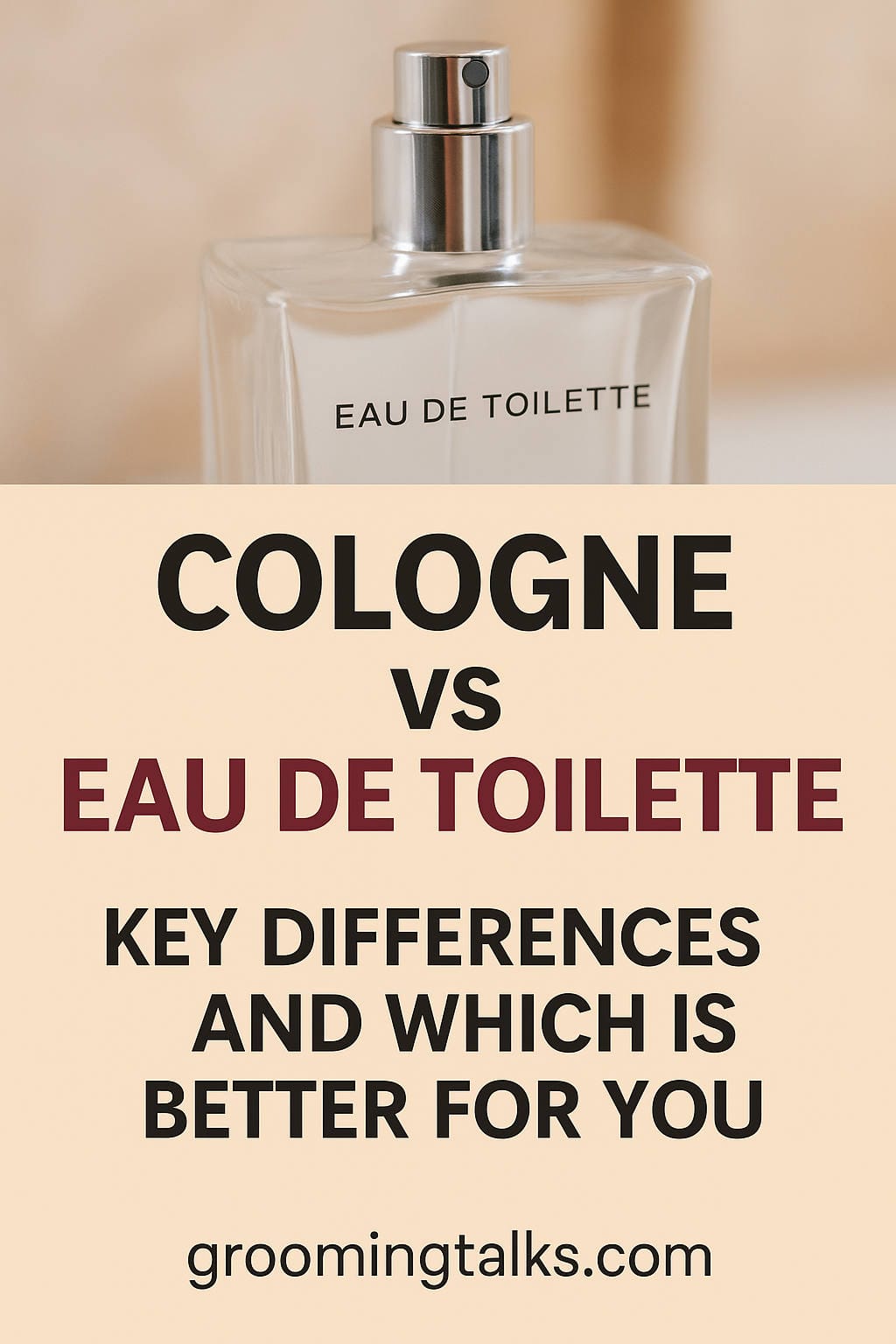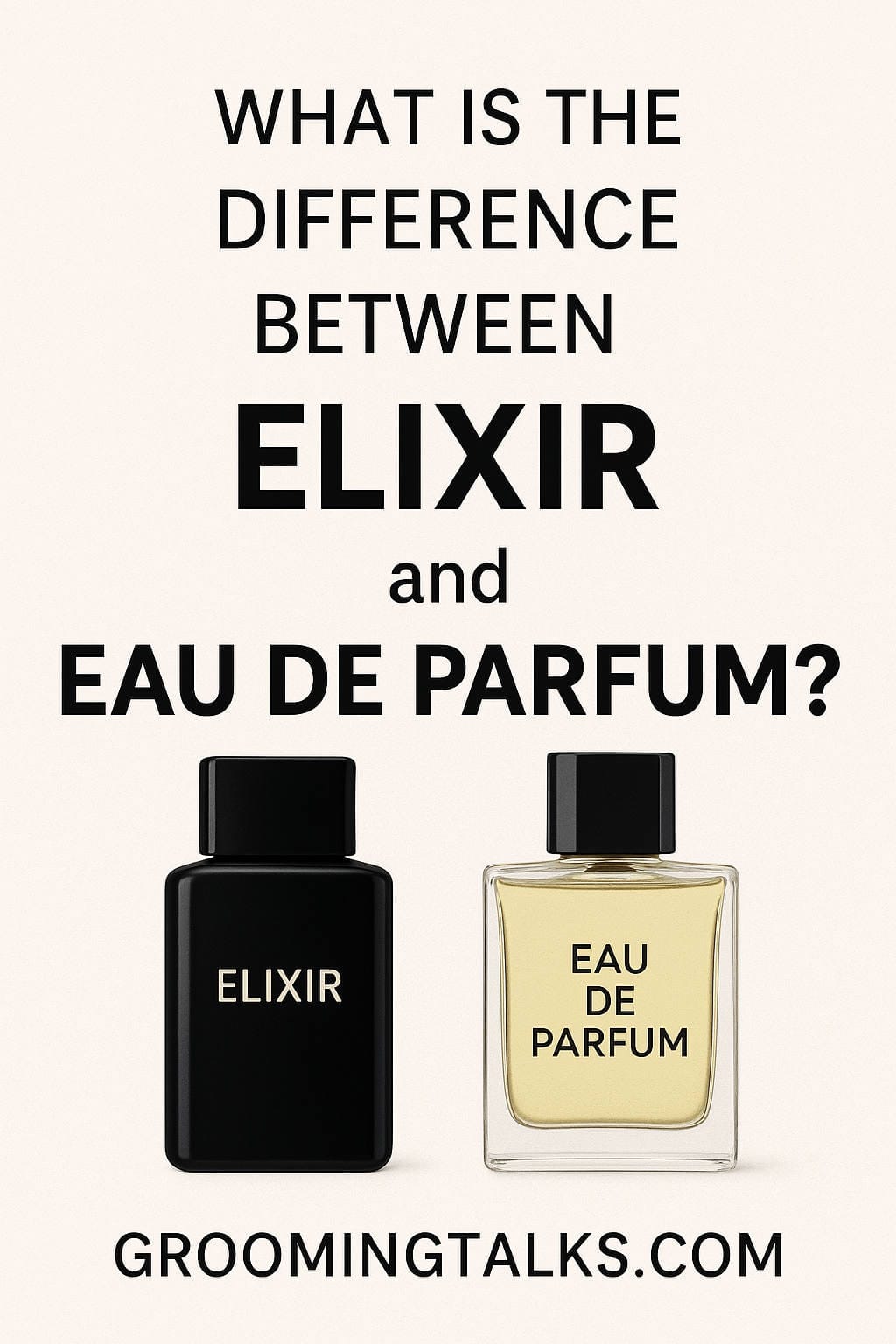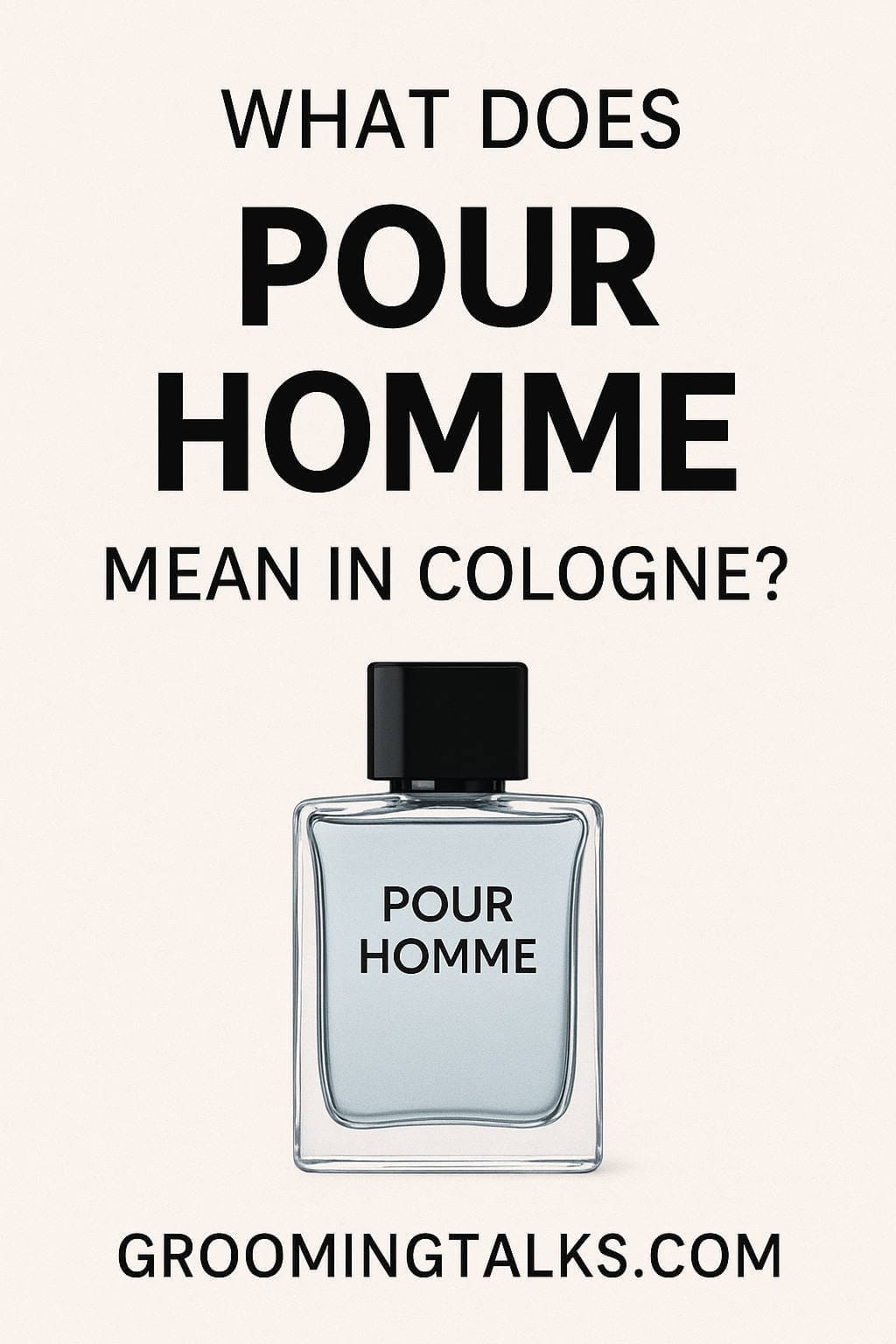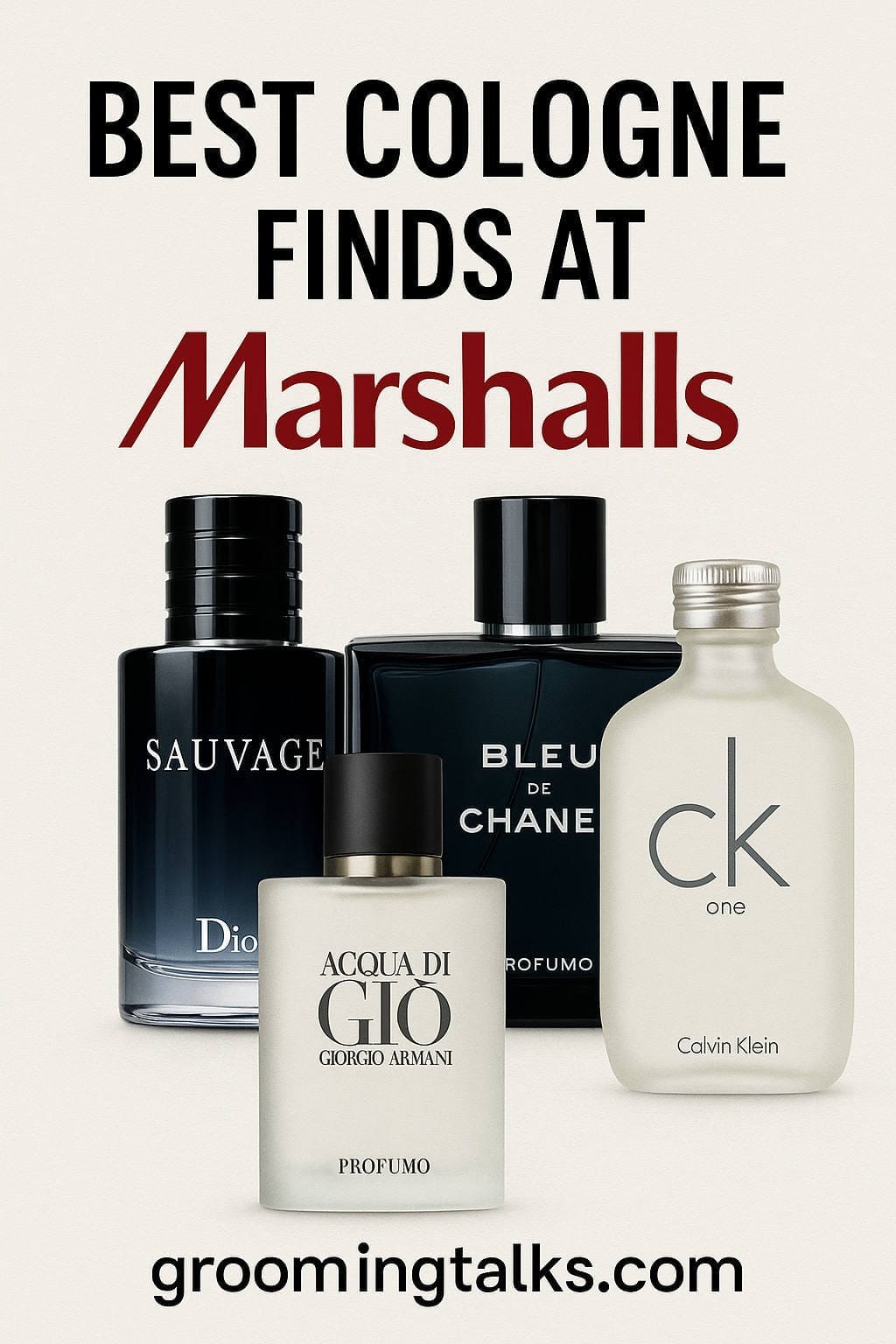If you’ve ever wandered through the fragrance section of a department store or browsed online for a new scent, you’ve probably encountered two terms that seem nearly identical: cologne and eau de toilette. They might appear interchangeable, especially when the sales associate says, “They both smell the same.” But in reality, these two types of fragrances have distinct differences that go far beyond the name on the bottle.
Understanding what sets cologne apart from eau de toilette can help you make smarter buying decisions, choose a fragrance that truly suits your lifestyle, and avoid wasting money on something that doesn’t meet your expectations. This guide will break down everything you need to know, from how these fragrances are made to when and how to wear them for maximum effect.
Let’s dive in.
Understanding Fragrance Concentration: The Foundation of It All
Before comparing cologne and eau de toilette, it’s crucial to understand how fragrances are structured. Every perfume, no matter how expensive or affordable, is composed of three key components:
- Aromatic compounds (these give the perfume its scent)
- Alcohol (used as a carrier and to help disperse the scent)
- A small amount of water
The strength and longevity of a fragrance depend primarily on the concentration of aromatic compounds. Here’s a simplified breakdown:
- Parfum (Extrait de Parfum): 20-30% fragrance oils. Rich, luxurious, and long-lasting (up to 24 hours).
- Eau de Parfum (EDP): 15-20% fragrance oils. Balanced in strength and longevity; ideal for evening or colder weather.
- Eau de Toilette (EDT): 5-15% fragrance oils. Light and fresh, suitable for daytime and everyday use.
- Eau de Cologne (EDC): 2-5% fragrance oils. Lightest in strength and short-lived. Often citrusy and refreshing.
- Eau Fraîche: 1-3% fragrance oils. Mostly water and alcohol; more of a light splash than a true perfume.
This concentration scale is the key to understanding the differences between cologne and eau de toilette.
What Is Eau de Cologne?
Let’s start with cologne, or more technically, Eau de Cologne (EDC). Originally created in Cologne, Germany in the 1700s, this fragrance style was designed to be a refreshing, citrusy splash for the body. It was never meant to be bold or long-lasting but rather a quick way to feel and smell fresh.
With only about 2-5% aromatic oils, cologne is very diluted. It usually contains top notes like lemon, orange, neroli, bergamot, or lavender. These bright, energetic notes are noticeable right away but tend to fade quickly—often within 1 to 3 hours.
Today, “cologne” has become synonymous with men’s fragrance in some regions (particularly in the United States). However, many products labeled as “cologne” may actually be eau de toilette or even eau de parfum in terms of strength. That’s why it’s essential to look at the actual concentration if you want to know what you’re really buying.
When Should You Use Cologne?
Colognes are perfect for certain situations:
- Morning routines: Great for a quick spritz after a shower.
- Hot weather: Light and refreshing, cologne works well in high humidity.
- Short outings: If you’re heading out for a walk, coffee run, or errand, a cologne gives you just enough scent.
- Layering: Some people use cologne as a base layer underneath stronger scents.
However, if you need your fragrance to last more than a few hours, cologne might not be your best bet.
What Is Eau de Toilette?
Eau de Toilette, or EDT, sits a step above cologne in terms of strength. With about 5-15% aromatic oils, it provides a longer-lasting scent and usually features a more layered composition.
While colognes often focus on one note or a simple blend, eau de toilette is crafted with the traditional fragrance pyramid:
- Top Notes: These are what you smell first (citrus, herbs, etc.).
- Heart (Middle) Notes: These form the main body of the scent (floral, spicy, or woody).
- Base Notes: These are the longest-lasting (amber, musk, vanilla).
EDTs typically last between 4 to 6 hours, though this can vary based on skin chemistry, climate, and how much you apply.
When Is Eau de Toilette a Better Choice?
Eau de toilette is ideal for:
- All-day wear: It can last through a workday or afternoon event.
- Layering with other grooming products: It complements scented lotions, body washes, and aftershaves.
- Office and casual settings: Light enough not to overpower, but complex enough to be noticeable.
- Seasonal transitions: Many EDTs are versatile and adapt to spring, fall, or cooler summer days.
EDT is a middle-ground fragrance: not too heavy, not too fleeting.
Key Differences Between Cologne and Eau de Toilette
Let’s zoom in on the most practical differences to help you make a more informed decision:
1. Strength and Staying Power
- Cologne is much lighter and generally fades within a couple of hours.
- EDT offers longer-lasting performance, typically up to 6 hours.
2. Composition and Complexity
- Cologne often contains simple, top-heavy notes.
- EDT usually includes top, middle, and base notes, offering a more evolved scent experience.
3. Cost vs. Value
- Colognes tend to be cheaper upfront.
- But because they don’t last as long, you may use more of it, leading to more frequent repurchases.
- EDTs are more cost-effective over time for daily users.
4. Season and Occasion
- Cologne is better for warm weather, casual outings, or the gym.
- EDT is more versatile, great for work, dates, or any situation where you want the scent to linger.
5. Skin Type Compatibility
- People with dry skin may find cologne evaporates too quickly.
- EDT’s higher concentration can adhere better to drier skin types.
Understanding the Fragrance Lifecycle
Knowing how a scent develops over time can help you appreciate what you’re wearing. The lifecycle of a fragrance typically follows three stages:
- Top Notes: These are the initial scents you smell immediately after application. Light and volatile, they disappear within 10-15 minutes.
- Heart Notes: These emerge after the top notes fade. They define the core character of the fragrance and last for 2-4 hours.
- Base Notes: These are the foundation. Rich, deep, and long-lasting, they kick in later and linger for hours.
Colognes usually emphasize top notes, which means their impact is instant but short-lived. EDTs give you the full olfactory journey.
Marketing Confusion: Why Labels Can Be Deceptive
Here’s where things can get confusing: fragrance terms are not always used consistently. Brands sometimes label a product as “cologne” when it’s actually an EDT. This is especially common in men’s products, where “cologne” is used as a catch-all.
To avoid confusion:
- Look for the actual concentration percentage if it’s listed.
- Research the product online or consult reviews.
- Don’t rely on naming alone to determine strength.
How to Choose Between Cologne and Eau de Toilette
Let’s say you’re in the market for a new fragrance. How do you decide between these two?
Ask yourself:
- Do you want a fragrance that lasts all day without reapplying? Choose an EDT.
- Do you prefer something light that won’t overpower in close settings? Go for cologne.
- Are you looking for something budget-friendly for occasional use? Cologne fits the bill.
- Do you want more complexity and sophistication in your scent? EDTs typically offer more layers.
- Will you wear this in summer or humid weather? Cologne is ideal for refreshing touch-ups.
Fragrance Application Tips for Maximum Effect
Whether you go with cologne or EDT, application technique can significantly affect performance:
- Apply to pulse points: These include wrists, neck, behind ears, and inner elbows. Heat intensifies the fragrance.
- Spray, don’t rub: Rubbing breaks down the fragrance structure.
- Moisturize your skin first: Fragrance sticks better to hydrated skin.
- Don’t overdo it: Especially with EDT, two to three sprays are often enough.
- Store it properly: Keep your fragrance in a cool, dark place. Heat and light degrade the scent over time.
Common Myths About Cologne and Eau de Toilette
Let’s debunk a few persistent myths:
Myth 1: Cologne is for men, and EDT is for women.
This is false. Both cologne and EDT refer to concentration, not gender. Many women wear colognes, and many men use EDTs. The scent notes—not the label—dictate gender preferences.
Myth 2: Stronger is always better.
Not true. A light fragrance may be more appropriate in professional or sensitive environments. It’s about context, not power.
Myth 3: Price equals quality.
You can find high-performing colognes and EDTs at various price points. Don’t judge a fragrance by its brand alone.
Myth 4: Fragrance should be smelled by everyone around you.
Fragrance should be discovered, not announced. If people smell you before seeing you, you’ve overdone it.
Real-Life Scenarios: Which Should You Choose?
Let’s make this even more practical with a few everyday situations:
- Morning coffee run or gym session? Grab a citrusy cologne.
- Office workday? Go with a clean, subtle EDT that won’t offend anyone in the elevator.
- First date or dinner out? Opt for an EDT with complexity and warmth to create a memorable impression.
- Backpacking or travel? Cologne is light and portable, but consider a travel-size EDT for longer wear.
Layering Scents: Advanced Tips
Some people like to layer fragrances to create a custom scent. Here’s how to do it safely:
- Stick to one fragrance family: For example, citrus with citrus or woody with spicy.
- Start with a lighter base: Use cologne underneath and an EDT on top.
- Use matching body products: Many fragrances have complementary shower gels or lotions.
Reader Favorites: Fragrance Recommendations
Want some inspiration? Here are some highly rated colognes and EDTs that cater to different tastes and budgets.
Colognes Worth Trying
- 4711 Original Eau de Cologne: A timeless classic with citrus and herbal notes.
- Tom Ford Neroli Portofino: Bright, fresh, luxurious.
- Acqua di Parma Colonia: Refined and elegant with a citrus-forward profile.
- Jo Malone Lime Basil & Mandarin: Zesty and sophisticated.
- Atelier Cologne Orange Sanguine: Juicy and uplifting.
Top Eau de Toilettes
- Dior Sauvage EDT: Fresh, spicy, and wildly popular.
- Chanel Bleu de Chanel EDT: Sophisticated and versatile.
- YSL Y Eau de Toilette: Crisp and modern.
- Versace Dylan Blue: Masculine and aquatic.
- Acqua di Gio by Giorgio Armani: Iconic, fresh, and always in style.
Final Thoughts: Choosing What’s Right for You
At the end of the day, whether you choose cologne or eau de toilette comes down to personal preference and lifestyle. Cologne offers a lighter, more fleeting scent—ideal for casual settings and hot climates. Eau de toilette provides more structure, longevity, and versatility, making it a better everyday fragrance for many people.
Don’t be swayed solely by brand names or flashy ads. Instead, test both types on your skin. Notice how they evolve over time. How do they make you feel? How do others react? These are the real indicators of the right fragrance for you.
And most importantly, remember this: fragrance is personal. The best scent is the one that makes you feel confident, refreshed, and unmistakably you.
So take your time, explore your options, and enjoy the journey—because smelling great is one of life’s simplest and most powerful pleasures.






